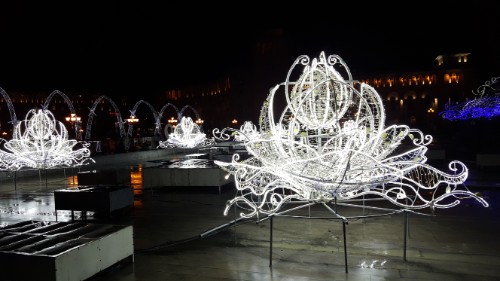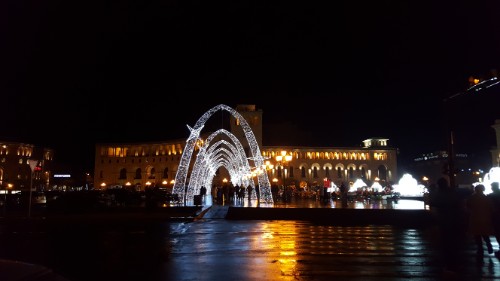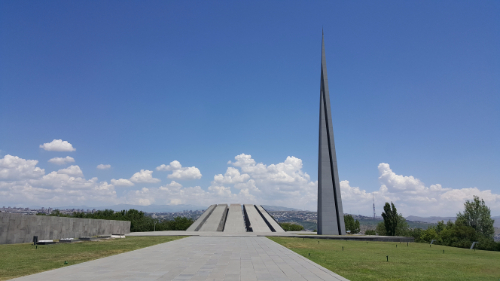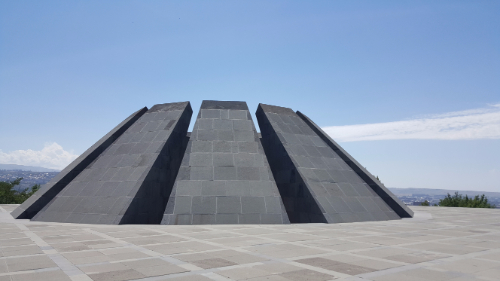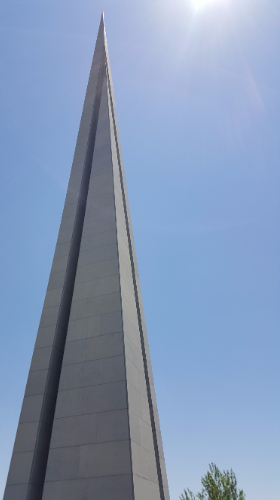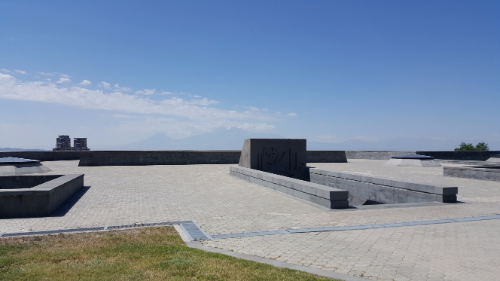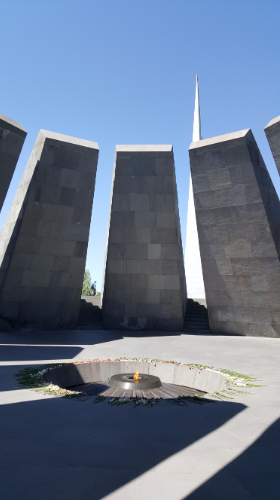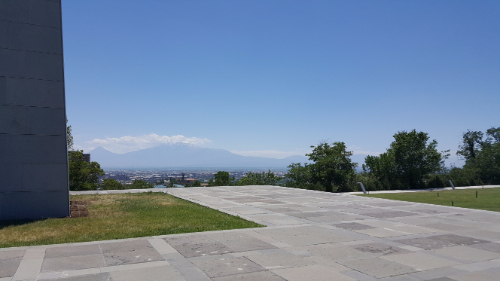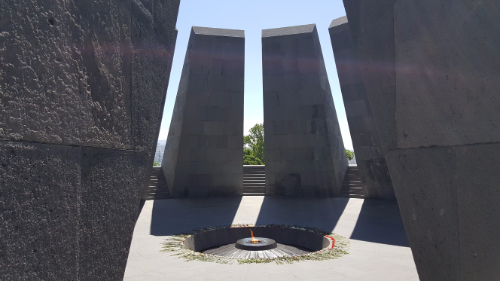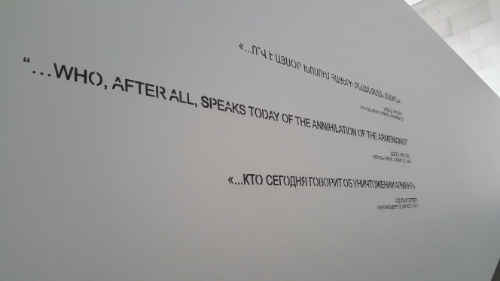It’s weird being away from home for Christmas. It’s even weirder being away from home for Christmas and having no one around celebrating. In some ways, I think that’s made it much easier. I don’t have to look around here and see everyone celebrating with their families while my family is halfway around the world. Instead, today was just like every other day. People went to work, kids went to school, and stores were open.
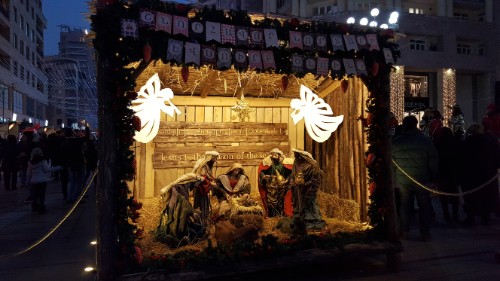
When it comes time for Christmas to be celebrated here, on January 6th, I’ll be in Lebanon! I’m going to visit Badveli Nishan and Maria, family friends who moved there this year (shout out to Badveli’s blog for interesting musings on life in Lebanon). They came to Armenia for a week back in October, and we were able to meet up a couple of times. While they were here, they invited me to spend Christmas with them in Beirut! I’m super excited to get to see them, experience Christmas in a new place, and be surrounded by adoptive family for the holidays!
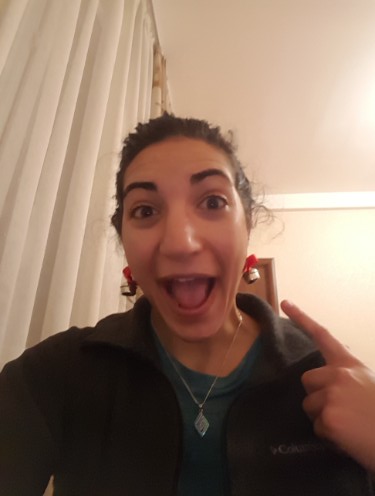
Even though it’s an adjustment not being home for the holidays, I have been making some new, good friends here which makes it easier. It was hard after a bunch of my friends from the summer left, and over the last month or so, things started falling into place again, both with brand new friends and reconnecting with some old ones.
At work, we have a really fun group! Besides me, there are three other people volunteering there, Hagop, Liz, and Olivia. They’re all nice, and two out of three of them are going to be here longer than I am! That means no hard goodbyes with Hagop and Olivia because it’s always easier to be the leaver rather than the left. I’ve started talking more with Yelena, one of the full-time staff at work, and she’s great too. Feeling like I have a little community there makes going to work much more enjoyable.
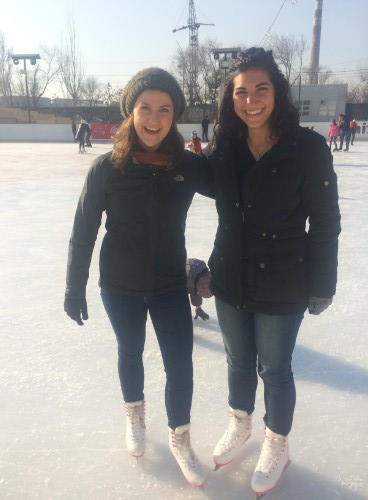
I also made a new friend at church, Zoe. She’s going to be in Armenia for at least a year, so there’s another person who I don’t have to worry about leaving me! We went ice skating together a couple weeks ago, and once you’ve been ice skating with someone, your relationship reaches a whole new level… one hour of skating in circles, trying not to fall or skate over a child, and talking about anything and everything. It’s quite the friendship exercise (both physically and emotionally).
I think it’s cool to have friends from all different parts of life because then you get to bring them together and see what happens! My birthday was a perfect opportunity for that. For the opera, our group was me, Liz, Olivia, Zoe, and Gabrielle who is a friend from my old language class. Only Liz and Olivia knew each other ahead of time, and it was a ton of fun! When we went out for dessert afterward, Olivia and Gabrielle swapped out with Faith and Alina, a Birthright friend and an ex-BR friend who is now working in Yerevan. I like getting to see people connect, and when you’re friends with a bunch of different people, you feel like it’s only right that they meet and like each other.
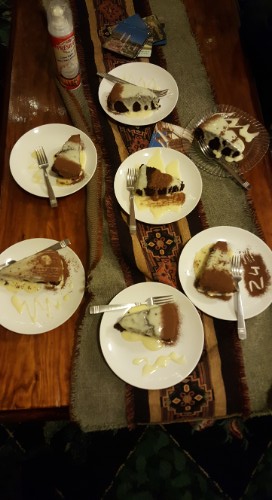
I’ve been trying to be less of a hermit (it’s too easy to let that happen when you live alone), and that requires an active effort which can be a struggle. That’s especially true when work nights are involved because all I want to do on non-language class days is go home and sleep! A couple weeks ago, I went with Hagop and Olivia to a screening of a genocide documentary called “Intent to Destroy: Death, Denial, and Depiction”. I wasn’t sure exactly what to expect, and it turned out to be incredibly interesting. I have seen and read plenty of things about the Armenian Genocide, but this took a different approach than most. It followed the filming of the movie “The Promise”. There were mixed reviews on the quality of the storyline in that movie, but that’s really not the point. The point is that for years, people have been trying to make a major, mainstream movie about the Armenian Genocide, and every time, it’s been shut down somehow due to pressure from the Turkish government. The US has strategic reasons for wanting to stay on Turkey’s good side, so rather than standing on the side of justice, the US government has failed to acknowledge and condemn the actions of the Ottoman Empire 100 years ago and has even contributed to pressuring production companies to abandon projects.
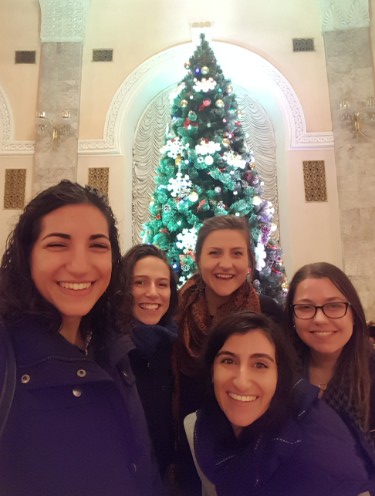
This documentary told the story of the genocide while also weaving in other stories: what happened to previous attempts to make a movie like this, people’s individual experiences during the genocide, impacts of the persistent denial, etc. It also gave some genocide deniers a chance to speak, and that was interesting because I’ve never heard anything like that before. I guess I should have known that such people existed considering that there are even people who deny the Holocaust happened, but it was strange to actually hear the voices of denial. They say that it was a war and that yes, many Armenians died, but that’s what happens in a war, and many Ottoman Turks died as well. Forget the fact that a huge number of the Armenians were women, children, and the elderly and that the Ottoman Turks were mostly able-bodied soldiers… Anyway, it was surreal and a little discomforting to hear people questioning something I’ve known as fact for my entire life. I strongly recommend checking it out if you get the chance!
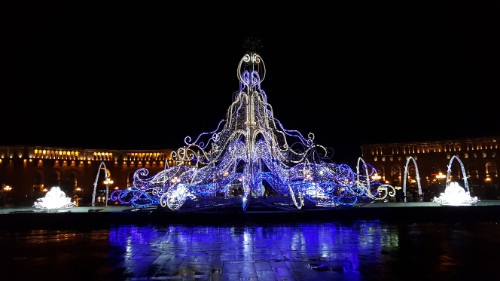
I’ve also been making some new friends in my new language class. I haven’t talked about that yet, have I? I’m pretty sure that the last time I mentioned language class, I was raving about how awesome my class was and how well things were going with my teacher and how happy I was. Yeah… so probably the week after that, I was informed that I was switching classes. Devastating. I had the option of staying with my teacher and joining her new class but was warned that it would probably be too easy. After trying to stay with her for one class, I was forced to admit that I needed to get over it and move on. It was kind of cool to see how far I’ve come since my teacher’s new class was at the point where I was probably three months ago, but mostly I was just depressed because I knew that I had to get to know a whole new class and a new teacher.
Now, it’s been about three weeks with my new class, and it’s not so bad. This class is definitely at a higher level than my original class, and it’s pushing me to learn more. That’s good I guess. I’m still getting used to the teaching style and the other students, but I’ll get there. The best part is that everyone in the class can read Armenian which means no more transliterating words on the board. A recommendation for anyone seriously trying to learn a language with a different alphabet – learn the alphabet as soon as possible because it makes everything else SO much easier. At least with Armenian, there are a bunch of sounds that can’t be described with transliterated spellings, so you’re basically learning everything kind of wrong until you learn the correct sounds of the alphabet. Now that I can read, trying to do anything transliterated is a massive struggle because it all just seems wrong.
Anyway, things are going great for me right now. I feel happy and comfortable in my life here, and that’s exciting! It’s also good because I still have two months to go. If I was feeling unhappy, we’d be in trouble!
